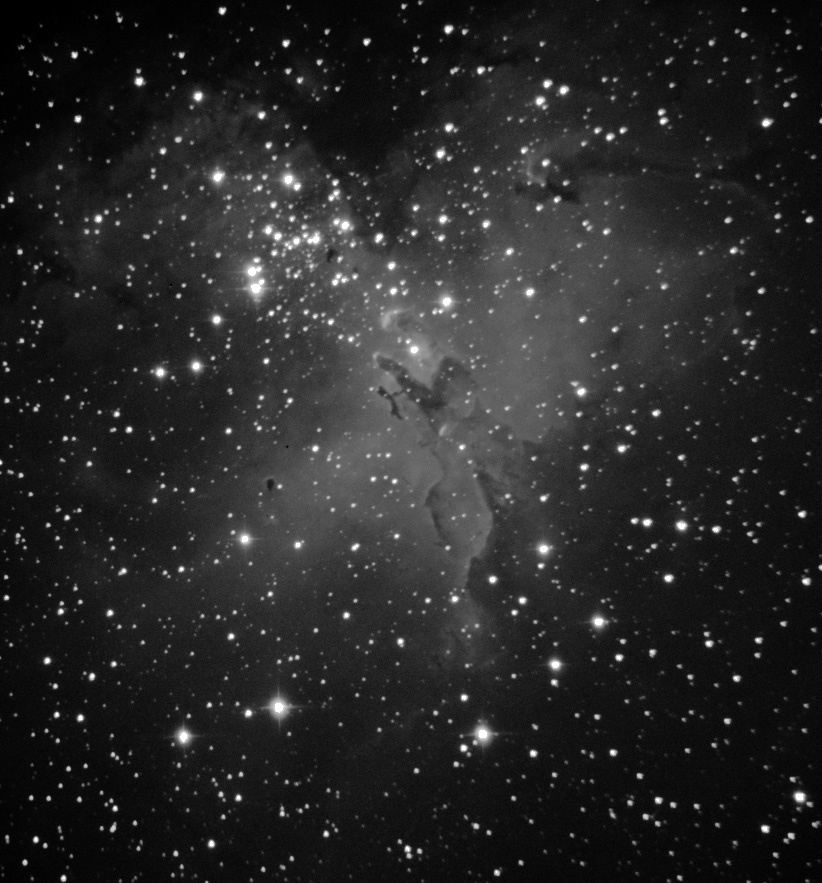Images from the 32" F/4
Newer images are shown at the top of this page.
Below are images of M33, M51 and a couple of galaxy clusters (in
Hercules, I believe), taken by Bob Holmes. The M51 image is from
January 2007, and the other three from late August 2006. The
image quality has
clearly improved over previous images (see below) in terms of
vignetting, collimation. limiting magnitude, and contrast. This
has been the result of improving the hardware and its arrangement to
reduce vignetting, adding baffling all over the telescope, tuning the
focuser aligmnent, and improving the guiding accuracy of the
mount. More improvement is possible in the future with better
flat fielding and other calibration improvements.
As of February 2007, the telescope
has detected
asteroids as faint as magnitude 23.2. The performance
currently being
achieved is amazing given the location.
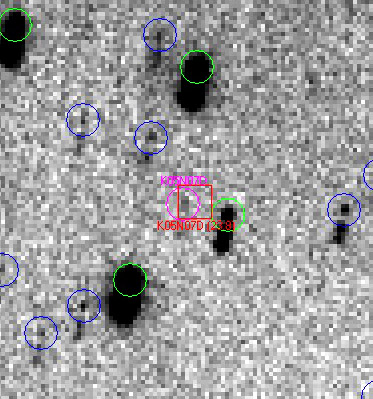
Possible image of a magnitude 23.8 asteroid. Object circled in
magenta. Red box indicates predicted position. Background
stars streaked because the telescope tracked the object. This
observation was NOT accepted by the minor planet center, so it is
unconfirmed, even though it may appear in the image.
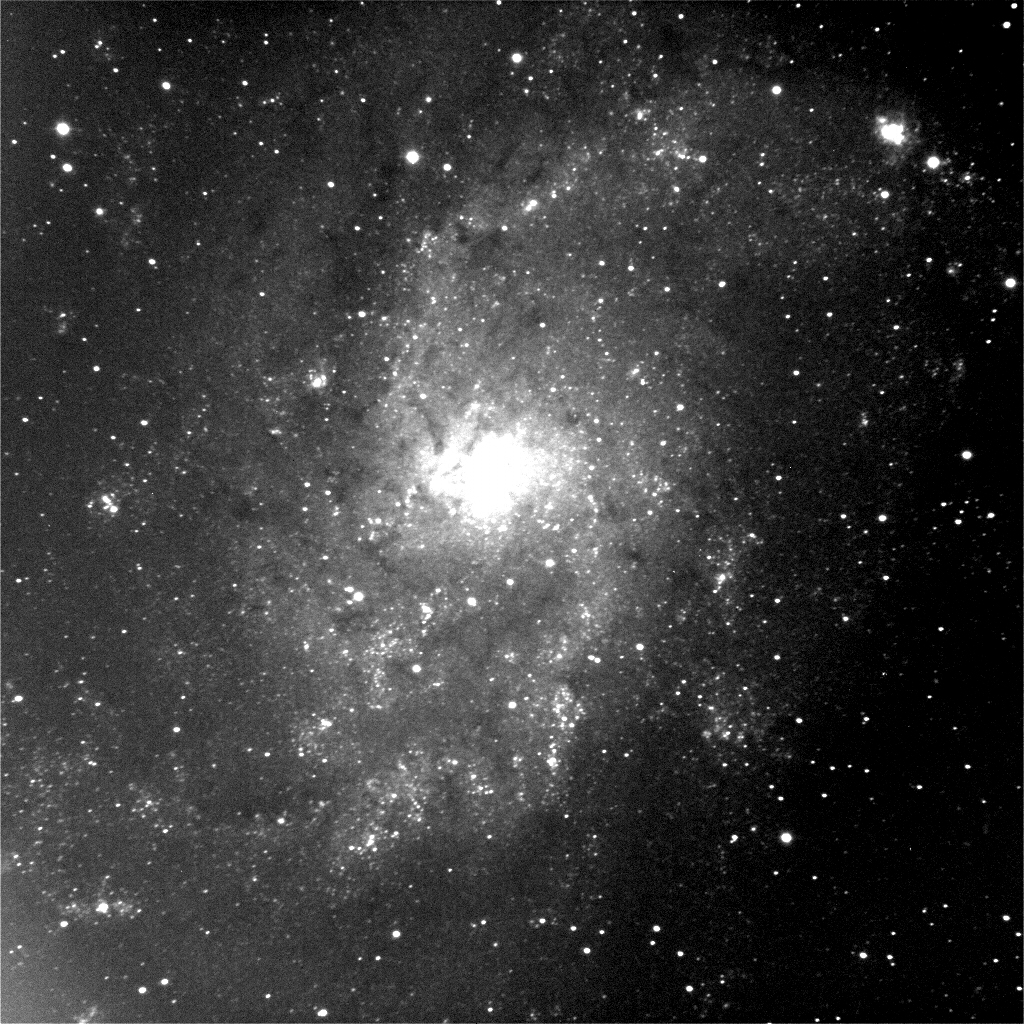
M33 in Triangulum - a.k.a. the Pinwheel Galaxy
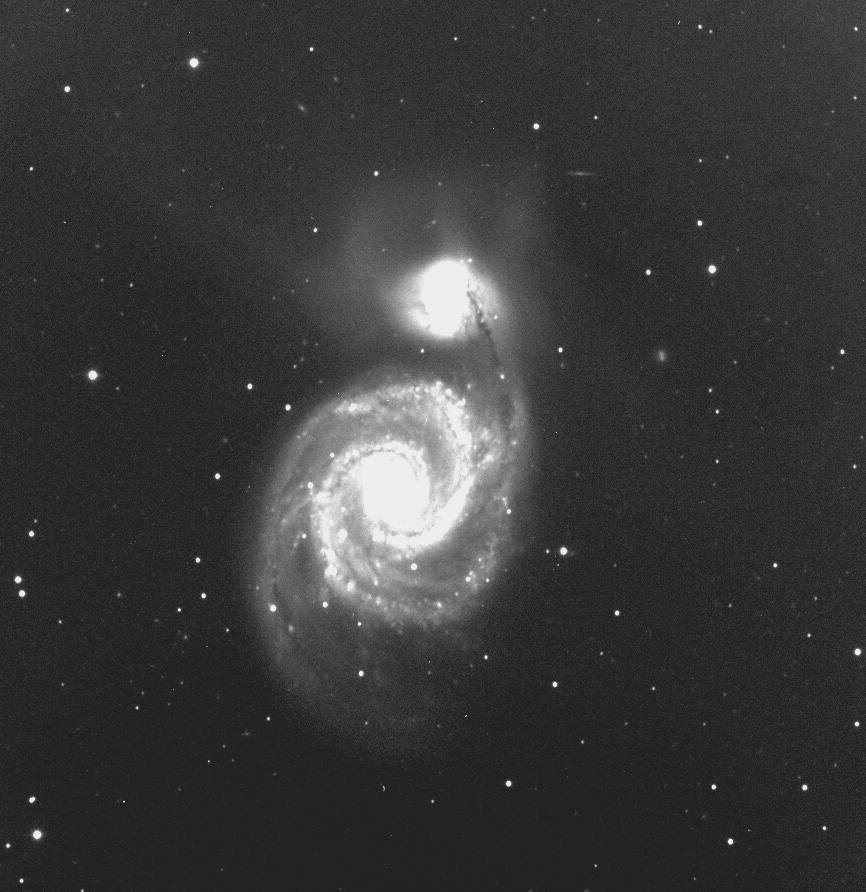
M51 - Interacting galaxies in Ursa Major. Note the faint
"streaks" in the background - those are very faint galaxies!
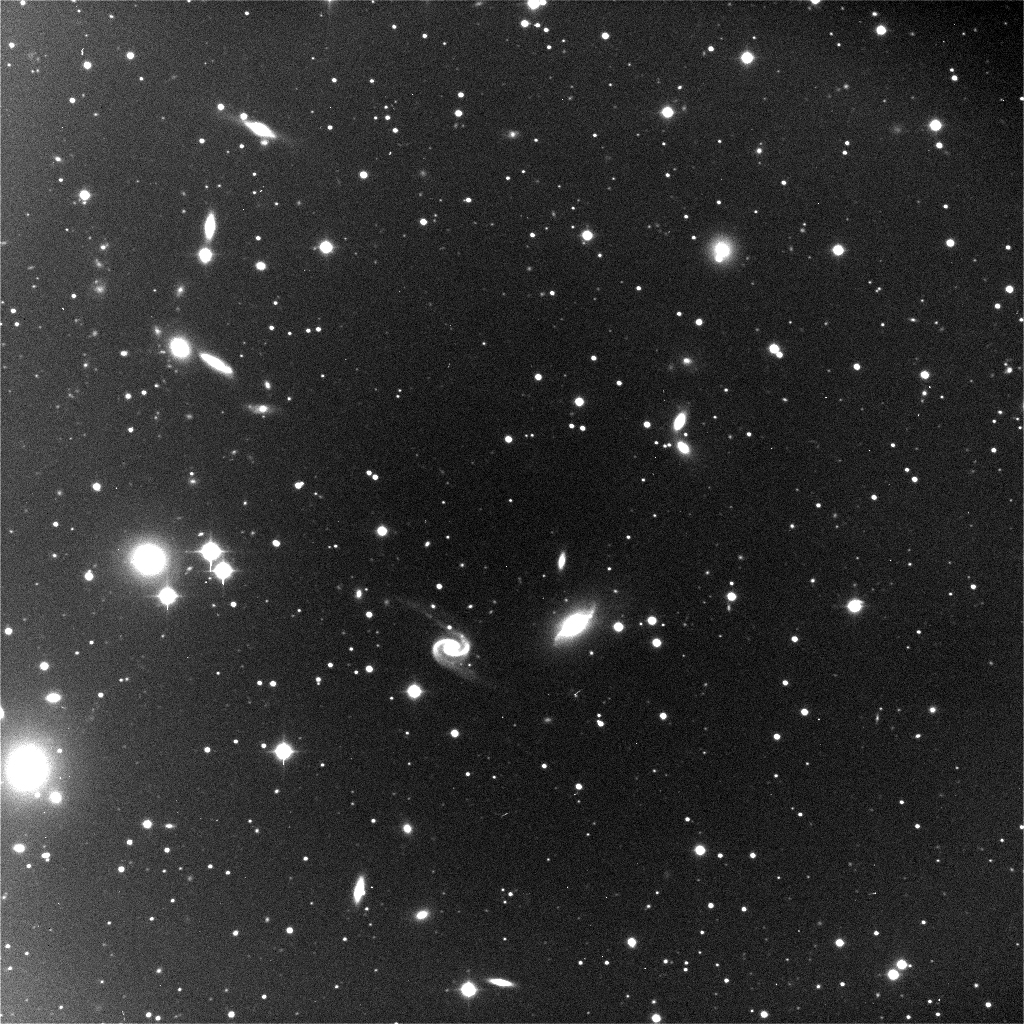
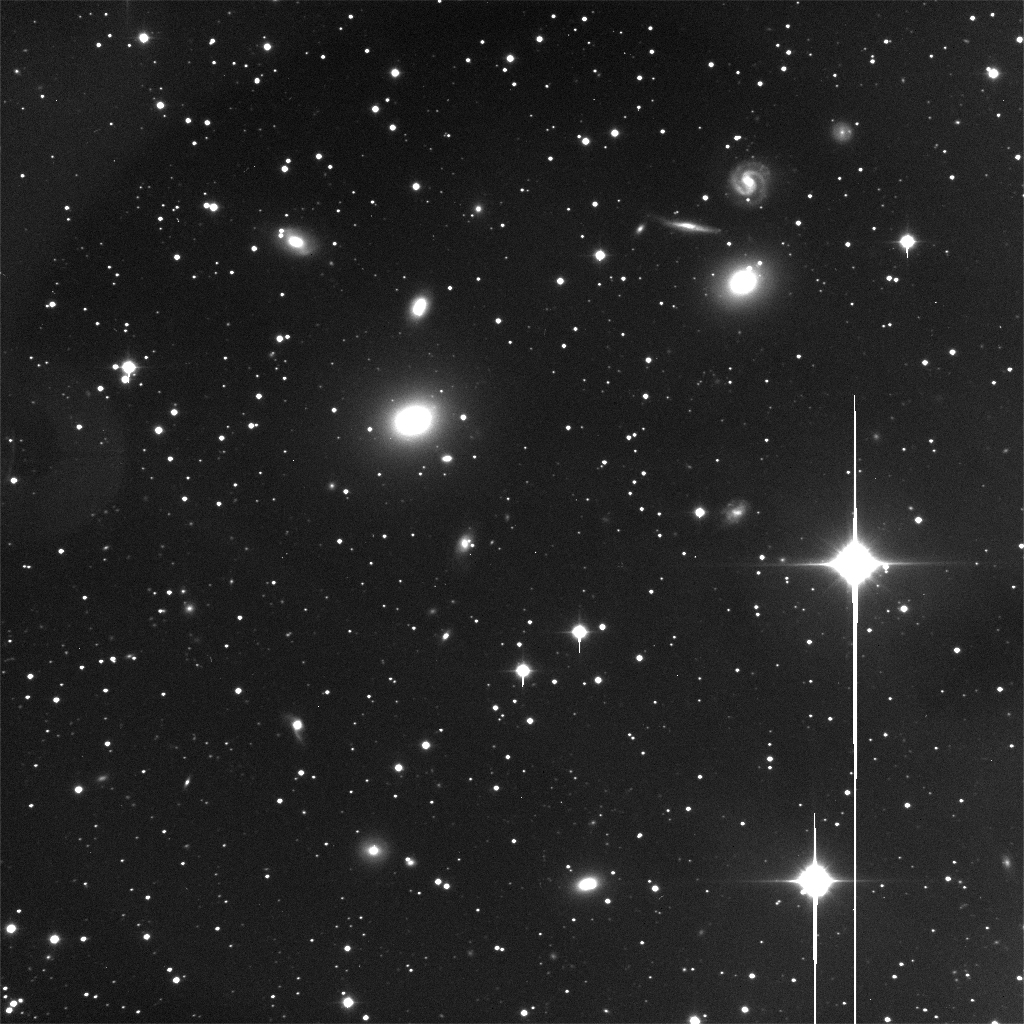
Galaxy clusters in or near Hercules (unsure of details, but still very
cool)
Older Images
The image below was taken on July 23, 2006. The brightness
gradient from left to right is from a not-so-great flat field, so
please forgive that.
The image is of the Abell 2151
galaxy cluster in Hercules. Exposure time was 25 minutes total, five five-minute
exposures. No dither (moving the telescope slightly between
exposures) was used.
The approximate limiting magnitude in the image is 21.5. We're fairly happy with
the depth of the image, considering other images of this cluster are
typically three hours or longer! Since most of the telescope time
has been devoted to gathering data and searching for asteroids with a
deadline looming, this quick image was taken during a rare break in the
observing schedule.
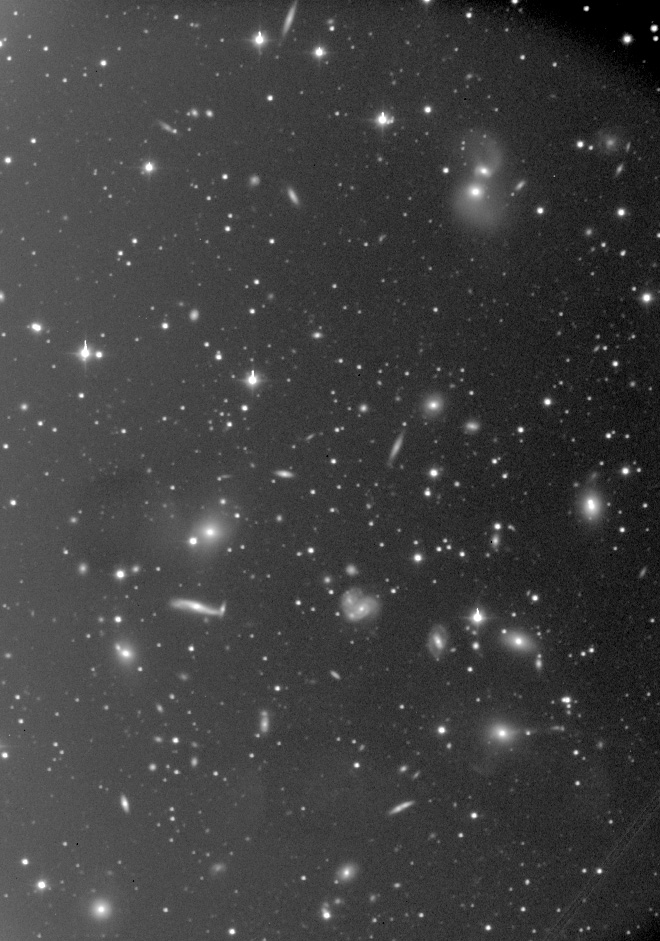
The following image was taken
on the morning of July 1, 2006.
This was the very first
serious night of work with the 32" after quite
a bit of debugging, doing the initial setup on the autoguider, and
getting the collimation somewhat close. Before you judge the
images, keep the following in mind:
1) No coma corrector was used. No filters were used.
2) The collimation was not perfect, and the object may
not
have been well-centered.
3) The guiding was not perfect.
4) All of the telescope's baffling had not yet been installed.
5) No flat fields were used; some vignetting is evident due to
the focuser tube.
6) The camera cables alter the appearance of the diffraction
spikes.
The purpose of these images was to show what the telescope could do
with a very short exposure time. We think they speak for
themselves. It is amazing what this telescope can do in under a
minute. The camera used was an SBIG STL-1001E. John Stone
stacked and processed the images to bring out the nebulosity.
Note - all
images were initially 1024x1024, but I
have cropped them.
M16 - stack of 12 four-second exposures.
